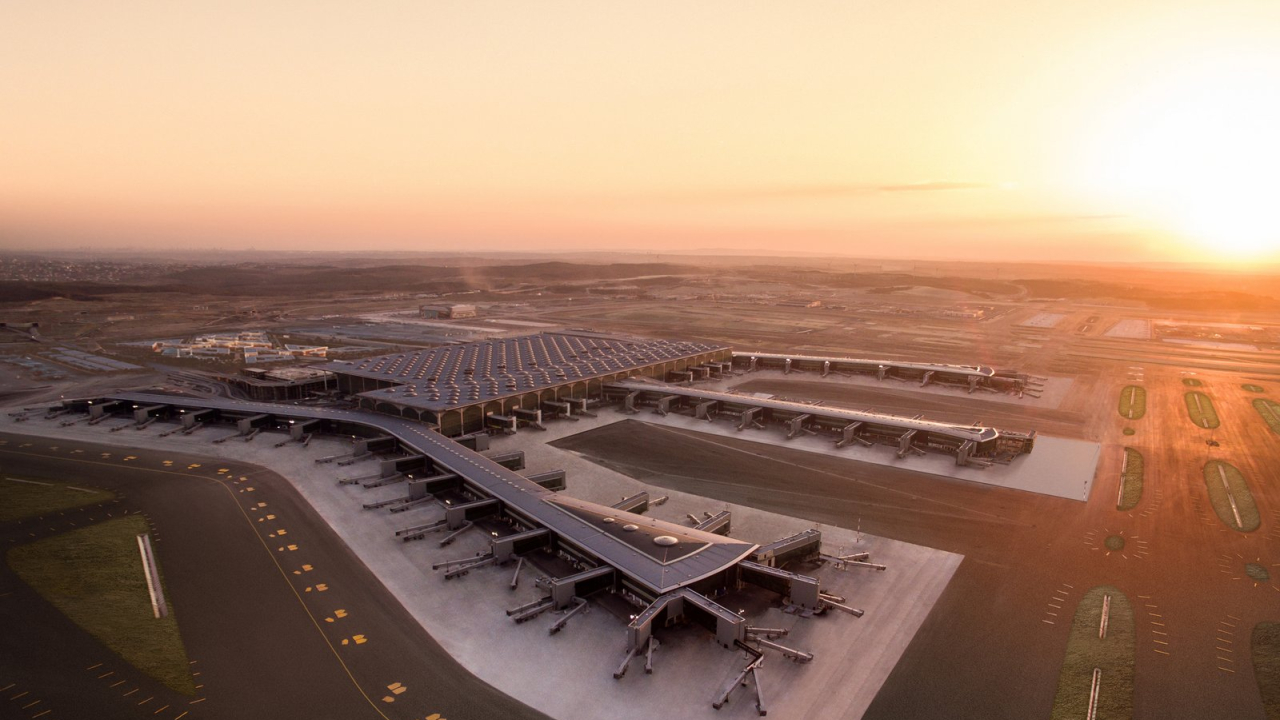Executive terminal with the Royal touch
Kuwait's US$40 million executive/general aviation (GA) terminal was designed by Mott McDonald in co-operation with Jet Aviation of Switzerland, which was originally contracted to operate it.

Initially referred to as the Royal Aviation terminal, as it is owned by Royal Aviation Company KSCC, it has now been renamed the Sheikh Saad terminal, after the ‘Father Sheikh’ who passed away in May 2008. The terminal is not to be confused with the Amiri Terminal, which is currently under construction.
The Sheikh Saad Terminal opened on 18 May 2008 and is operated by Mercury Aviation Group following the cessation of Jet Aviation’s role in the project. Due to lack of space at the main airport terminal, Wataniya Airways was permitted to start operations there on a one-year renewable contract. In effect, it has taken over most of the terminal with its branding but there are still two large executive lounges and a VIP lounge.
Wataniya, which started operations in January 2009 with two aircraft leased from Alafco, is owned by Kuwait National Airways (KNA), a company established in 2005.
KNA is also the majority owner of United Projects Company for Aviation KSCC (UPAC), which holds 55.75% of the shares of Royal Aviation and also holds build-operate-transfer contracts for some of the development work at Kuwait International Airport. It manages all commercial real estate at the facility.
The leading investor in KNA is the KIPCO Group, which the Arab Times referred to as “one of the biggest diversified holding companies in the Middle East and North Africa”.
Sulaiman Al-Jaber, Royal Aviation board member and engineering & maintenance director, said work on the terminal started around four years ago with an investment of KD15 million. “Wataniya started commercial flights in January from our terminal as it couldn’t get the surfaces it needed at the main terminal,” Al-Jaber told Arabian Aerospace. “Wataniya is temporary for one year and might be renewable. We’re expecting that they’ll have to stay for longer,” which he admitted would be good for both companies.
“This terminal is also considered as a stand-by for the international (main airport) terminal, and all flights would be rerouted here if required. We are not busy – the maximum number of movements we have had is 24 a day. In a year or so Wataniya will have six or seven aircraft so about 20 flights a day, but eventually they will have to use another terminal. Wataniya is a business class airline so is much better service than normal airlines, with limos going direct to the aircraft.”
In terms of his role in maintenance and engineering, Al-Jaber says: “An area has been allocated for maintenance and operators are allowed to do line and light maintenance. But most are private owners who maintain their aircraft in many different places in the world.
“We are planning to either lease an area to an MRO provider or do it ourselves – when the business case is there. For the time being it is not a high priority but we may build a hangar for private aircraft maintenance up to A320 size.”
He adds that United Aviation maintains its Legacy 600s in the Kuwait Airways maintenance hangar.
Al-Jaber also says that, although Mercury was still supervising the terminal, the owners had “changed the contract – rather than them managing it, as we do that now”.
Showing Arabian Aerospace the facilities, Al-Jaber reflected on Kuwait’s role in aviation. “Originally we were the pioneers in aviation here in the Middle East – and even the manufacturers looked to Kuwait Airways. We used to lead the way with new aircraft. Now, the government is working to bring things back.”
The new Amiri terminal, designed by French architect Paul Andreu, is intended exclusively for the use of the Amir of Kuwait and visiting world leaders and dignatories.
Costing well in excess of its initial KD35 million estimate, it has been designed with the Airbus A380 firmly in mind and has an accompanying hangar that can house an A380 alongside a 747.
The terminal will be breathtaking when it opens in November, two months after construction is due to be completed. Workers are already lining its large central chamber with marble and hundreds of fibre optic cables hang from the ceiling. The main chamber will have stars and planets in the roof and a glass dome will be at the front with spiral staircases reminiscent of the Louvre in Paris.
Ebrahim Ashkanani, project engineer, told Arabian Aerospace that the terminal was being built by Ahmadiah Contracting & Trading Co, with Aeroports de Paris. The project started in December 2007, and is due to have a ‘soft opening’ with the Amir on 20 June.
Stay up to date
Subscribe to the free Times Aerospace newsletter and receive the latest content every week. We'll never share your email address.

